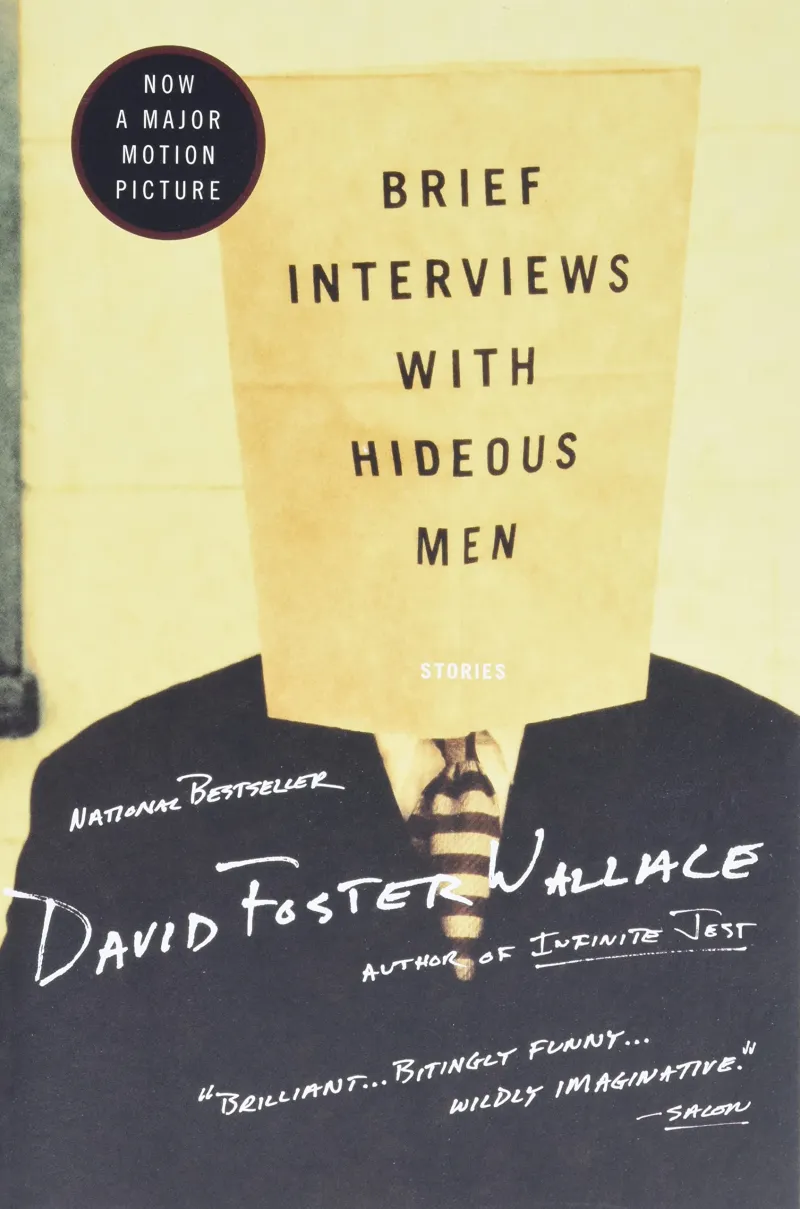An overview of
Brief Interviews with Hideous Men
by David Foster Wallace
2.Little, Brown and Companya
a.1999
Happy now? All borne out? Be happy. I don’t care. I knew she could. I knew I loved. End of story.
BI #20
Q. Interviewer
Q. Interviewer
Brief Interviews with Hideous Men summarized (in two sentences or less)
David Foster Wallace delves deep into the male psyche, revealing its quirks, flaws, and complexities. It's like therapy, but with way more footnotes and far less eye contact.
Brief Interviews with Hideous Men Trivia and/or (Un)fun Facts
Wallace said that he wanted to write about a character that you never hear from or see, but who is characterized in relief—by all of those around her.
To date, it's the only DFW book that's been adapted into a movie.
It's also the only DFW book that's been adapted into a play.
It's also the only DFW book that's been adapted into a movie and a play.
Before making it into the collection, many of these stories appeared in magazines like “The Paris Review” and “Harper’s.”
Why Brief Interviews with Hideous Men Is Challenging
Throughout what is ostensibly a short story collection comprising vignettes about nameless, problematic men, there is a thread of one-on-one interviews between an unnamed female interviewer and a host of anonymous, (emotionally) hideous men.
These interviews are presented as transcripts, and the interviewer's questions are omitted entirely, marked always and only in the text as Q.
So the reader is left to infer the questions from the answers.
And the answers are often so bizarre that the reader is left to wonder what the hell the questions could have been.
How to Read Brief Interviews with Hideous Men
The book is divided into three sections:
1. Twenty-three vignettes
2. Twenty-three interviews
3. One story
Read the vignettes in order.
Read the interviews in any order you like.
Read the story last.
Discussion Questions about Brief Interviews with Hideous Men
Brief Interviews with Hideous Men Research Prompts for Postdocs:
-
The Ethical Implications of Voyeurism:
Given the inherent voyeuristic nature of literature, where readers 'spy' on the innermost thoughts and experiences of characters, how does Wallace's decision to omit the female interviewer's voice challenge or reinforce the ethics of voyeurism? How might this be read in the context of contemporary pop culture's fascination with reality TV, social media, and the incessant gaze upon the 'other'?
Ergodic Discomfort and Postmodern Alienation:
The ergodic nature of "Brief Interviews with Hideous Men" demands active engagement from the reader. Does Wallace's use of this technique further the postmodern narrative of alienation and disconnection in contemporary society? How does this reflect or differ from other works in the ergodic genre, and what does this say about the philosophy of the self in an increasingly fragmented world?
Interrogating the 'Hideous' in Pop Culture and Philosophy:
Drawing from the title itself, how does the concept of the 'hideous' man align with or diverge from pop culture's representation of masculinity? Is Wallace's portrayal a commentary on the Nietzschean idea of the "abyss" wherein, when one looks long into it, the abyss also looks into you? How does this collection challenge or confirm society's philosophical understandings of the 'monstrous' within humanity?
Brief Interviews with Hideous Men Conversation Starters for Normal People:
- Literary Form and Content:
The stories in "Brief Interviews with Hideous Men" are presented as interview transcripts. How does this unique format affect your understanding and interpretation of the stories? What might Wallace be suggesting about the nature of storytelling or the boundaries between fiction and reality?
Exploring the Complexity of Relationships:
Relationships, both romantic and platonic, play a significant role in the collection. How does Wallace portray the complexities and challenges of human connection? Are there any recurring themes or motifs you observed in multiple interviews, and how do they reflect broader societal views on relationships?
Masculinity in a Contemporary Context: Wallace delves deep into the intricacies of masculinity. How do the portrayals of men in these interviews align with or challenge modern cultural notions of masculinity? Considering the rise of discussions around toxic masculinity and male vulnerability, how might Wallace's work contribute to these conversations?
Questions about Brief Interviews with Hideous Men that you can ask your dog:
- The Story of the Boy and the Depressed Person:
In one story, there's a boy who wants to make a sad person feel better. Can you think of a time when you tried to cheer someone up? How did you do it?
The Man Who Talks A Lot:
Some men in the stories talk a lot and say many things. Do you know someone who likes to talk a lot? What do they talk about?
Different Ways of Speaking:
In the book, people have conversations, which means they take turns talking. When you have a conversation with your friends or family, what do you like to talk about?
The Most Amusing Brief Interviews with Hideous Men Review I Can Find
The good bits are ok, the boring bits I skipped over. You're allowed to do that. It's not an exam.
★★☆☆☆
—Jonathan Norton via Goodreads
—Jonathan Norton via Goodreads
